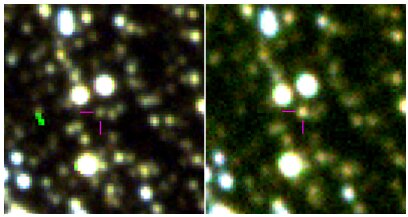'Dead' telescope discovers Jupiter's twin from beyond the grave
This is the most distant exoplanet Kepler ever found.

NASA's Kepler space telescope has spotted a Jupiter look-alike in a new discovery, even though the instrument stopped operations four years ago.
An international team of astrophysicists using NASA's Kepler space telescope, which ceased operations in 2018, have discovered an exoplanet similar to Jupiter located 17,000 light-years from Earth, making it the farthest exoplanet ever found by Kepler. The exoplanet, officially designated K2-2016-BLG-0005Lb, was spotted in data captured by Kepler in 2016. Throughout its lifetime, Kepler observed over 2,700 now-confirmed planets.
"Kepler was also able to observe uninterrupted by weather or daylight, allowing us to determine precisely the mass of the exoplanet and its orbital distance from its host star," Eamonn Kerins, an astronomer at the University of Manchester in the U.K., said in a statement. "It is basically Jupiter's identical twin in terms of its mass and its position from its sun, which is about 60% of the mass of our own sun,"
Related: The strangest alien planets (gallery)
The team, led by David Specht, a Ph.D. student at the University of Manchester, took advantage of a phenomenon known as gravitational microlensing to spot the exoplanet. With this phenomenon, which was predicted by Einstein's theory of relativity, objects in space can be seen and studied closer when the light from a background star is warped and thus magnified by the gravity of a closer massive object.
In hopes of using the warped light from a far-off star to detect an exoplanet, the team used three months of observations that Kepler made of the stretch of sky where this planet lies.
"To see the effect at all requires almost perfect alignment between the foreground planetary system and a background star," Kerins added in the same statement. "The chance that a background star is affected this way by a planet is tens to hundreds of millions to one against. But there are hundreds of millions of stars towards the center of our galaxy. So Kepler just sat and watched them for three months."
Get the Space.com Newsletter
Breaking space news, the latest updates on rocket launches, skywatching events and more!
The team then worked with Iain McDonald, another astronomer at the University of Manchester who developed a new search algorithm. Together, they were able to reveal five candidates in the data, with one most clearly showing signs of an exoplanet. Other ground-based observations of the same stretch of sky corroborated the same signals that Kepler saw of the possible exoplanet.
"The difference in vantage point between Kepler and observers here on Earth allowed us to triangulate where along our sight line the planetary system is located," Kerins said.
Aside from the excitement of discovering an exoplanet with an instrument no longer even in service, the team's work is notable because Kepler was not designed to discover exoplanets using this phenomenon. It is important to note, however, that, in 2016, Kepler's mission was extended. In 2013, after two reaction wheel failures, it was proposed that Kepler be used for a K2 "second light" mission that would see the scope detecting potentially habitable exoplanets. This extension was approved in 2014 and the mission was extended way past the scope's expected end date until it eventually ran out of fuel on Oct. 30, 2018.
"Kepler was never designed to find planets using microlensing so, in many ways, it's amazing that it has done so," Kerins said, adding that upcoming instruments like NASA's Nancy Grace Roman Space Telescope and the European Space Agency's Euclid mission, could be capable of using microlensing to study exoplanets and will be able to further such research.
"Roman and Euclid, on the other hand, will be optimized for this kind of work. They will be able to complete the planet census started by Kepler," Kerins said. "We'll learn how typical the architecture of our own solar system is. The data will also allow us to test our ideas of how planets form. This is the start of a new exciting chapter in our search for other worlds."
This discovery was described in a study posted March 31 to the preprint server ArXiv.org and has been submitted for publication in the journal the Monthly Notices of the Royal Astronomical Society.
Email Chelsea Gohd at cgohd@space.com or follow her on Twitter @chelsea_gohd. Follow us on Twitter @Spacedotcom and on Facebook.
Join our Space Forums to keep talking space on the latest missions, night sky and more! And if you have a news tip, correction or comment, let us know at: community@space.com.

Chelsea “Foxanne” Gohd joined Space.com in 2018 and is now a Senior Writer, writing about everything from climate change to planetary science and human spaceflight in both articles and on-camera in videos. With a degree in Public Health and biological sciences, Chelsea has written and worked for institutions including the American Museum of Natural History, Scientific American, Discover Magazine Blog, Astronomy Magazine and Live Science. When not writing, editing or filming something space-y, Chelsea "Foxanne" Gohd is writing music and performing as Foxanne, even launching a song to space in 2021 with Inspiration4. You can follow her on Twitter @chelsea_gohd and @foxannemusic.









